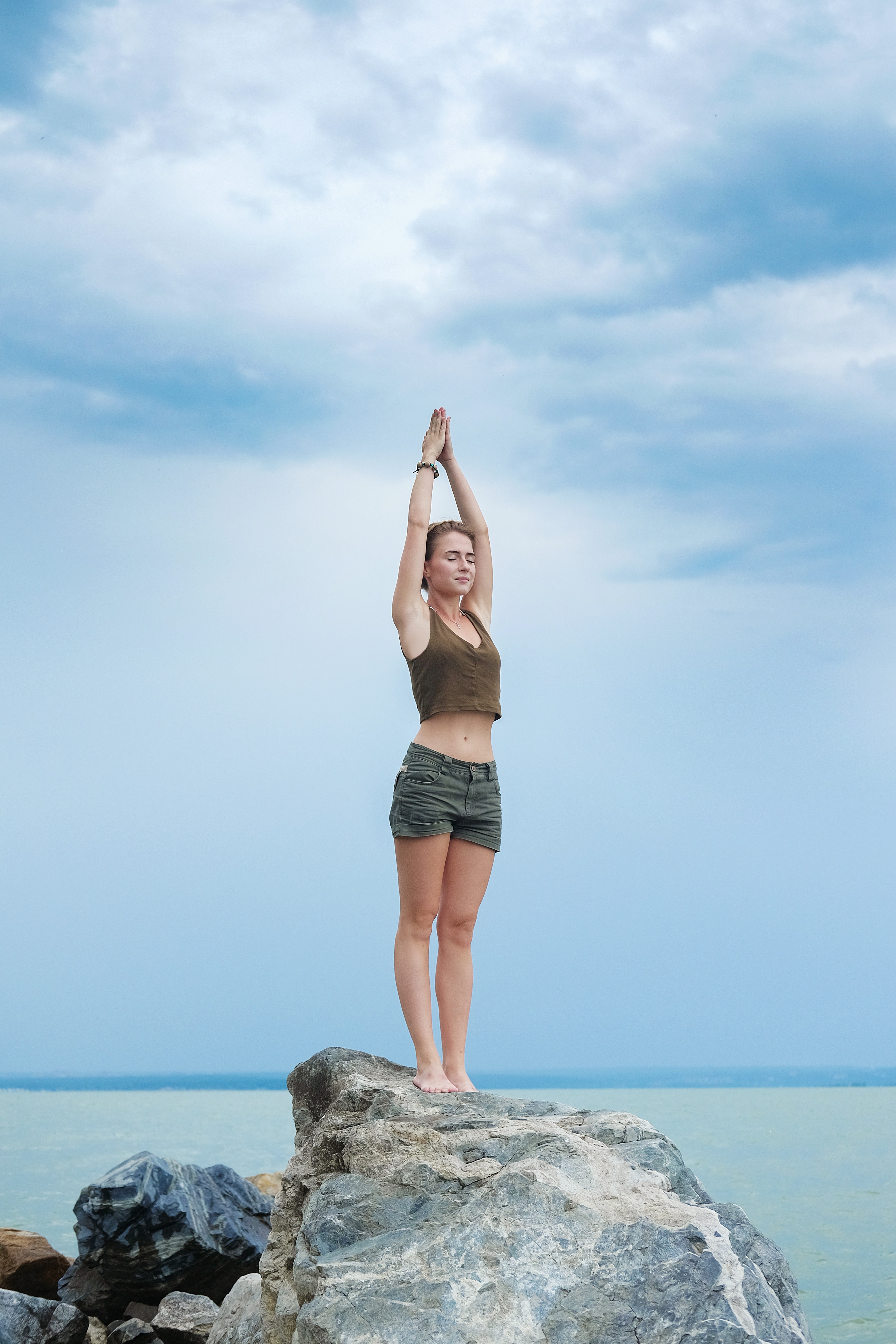Pose: Mountain
- Asana:
- Tadasana
- English Name:
- Mountain
- Type:
- standing
- First Used:
- 20th century
Tadasana, mountain Pose or Samasthiti is a standing asana in modern yoga as exercise; it is not described in medieval hatha yoga texts. It is the basis for several other standing asanas.
Etymology and origins
Tāḍāsana is from the Sanskrit words tāḍa, "mountain" and āsana meaning "posture" or "seat".
Samasthitiḥ is from sama meaning "equal", level", or "balanced";sthiti, "stand".
The pose is unknown in hatha yoga until the 20th century Light on Yoga, but the pose appears in the 1896 Vyayama Dipika, a manual of gymnastics, as part of the "very old" sequence of danda (Sanskrit for "staff" or "stick") exercises. Norman Sjoman suggests that it is one of the poses adopted into modern yoga as exercise in Mysore by Krishnamacharya and forming the "primary foundation" for his vinyasas with flowing movements between poses. The pose would then have been taken up by his pupils Pattabhi Jois and B. K. S. Iyengar.
Variations
Variations include the side bend Indudalasana, one of the asanas sometimes called Half Moon Pose.
Standing in a back bend gives the Standing Locust Pose, Stiti Shalabhasana. Placing the feet wider is common in vinyasa styles of yoga and provides a more stable base in this and other such standing asanas.
Namaskarasana, Pranamasana, or Prayer Pose has the hands in prayer position (Anjali mudra) in front of the chest.
Pashchima Namaskarasana or Reverse Prayer Pose has the hands in prayer position behind the back.
Urdhva Vrikshasana, also called Urdhva Hastasana or upward tree pose, has the hands stretched straight upwards, and the gaze is upward to the Angusthamadhye Drishti (thumbs). The pose occurs twice in Ashtanga Yoga's Surya Namaskar.
Parshvasana (Side Stretch Pose), also called Indudalasana, known from 1968, has the arms lifted and the body stretched over to one side.
Anuvittasana or Hasta Uttanasana (Standing Back Bend), has the arms raised and the back arched. An extreme form of the pose is Tiryang Mukhottanasana, in which the back bend is sufficient to enable the hands to grasp the ankles.
Some reclining asanas such as Supta Tadasana (Reclined Mountain Pose) stem from Tadasana.
Examples


